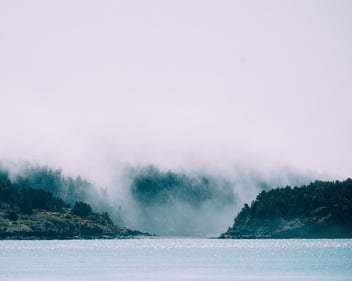by Lisa Hiton

Walking is an important part of one’s writing practice. Whether it’s how you begin your day, how you take a break in your day, or a means of traveling to new places, walking is as much a part of the writing life as reading. Just as writers must immerse themselves in sentences to tune their ears to a world made of nothing more than mere words, the practice of walking immerses the writer in the world itself—the one they’ll hope to make vivid out of mere words later. And so, dear writers, as we enter the world of environmental and nature writing this month, let’s take a look at the role of walking in our daily lives and its importance to our writing practices.
Famous Creative Walkers
Many beloved writers have been notorious and obsessive walkers. No matter the genre of writing, nation of origin, whether urban or rural, walking represents the physicality of thinking. And this isn’t just limited to writers: from Einstein to Steve Jobs, the world’s most influential thinkers have a lot to say about the role of walking in relation to having a rich inner life.
Henry David Thoreau: In his essay titled, “Walking”, Thoreau (most famous for his book, Walden) presents readers with the idea that walking is about creating the feeling of pilgrimage without a set destination. Not to mention, he focuses on the word “saunter”—or saint terre—which Francophiles and studiers of Latin might know means “holy land”. Thoreau did, indeed, saunter about the world, finding that the real pilgrimage was in the mind, more than at the end of a given path. On walking, he said: “I am alarmed when it happens that I have walked a mile into the woods bodily, without getting there in spirit.”
Mary Oliver: Celebrated American poet, Mary Oliver, is a contemporary champion of the dying art of walking. She has many essays and poems that engage the quietudes of nature, spending much of her life in Provincetown, MA and now in Florida. Though an Oliver interview is about as rare as seeing a whale breach, when she speaks of her art and life, walking often comes up. In a recent interview with Steven Ratiner at the Christian Science Monitor, she talked about the importance of walking and solitude: “I take walks. Walks work for me. I enter some arena that is neither conscious or unconscious. It’s a joke here in town: I take a walk and I’m found standing still somewhere. This is not a walk to arrive; this is a walk that’s part of a process. [Poet] Donald Hall takes short naps. Naps work for him, open the door to the “vatic” voice, as he calls it. Something else will work for somebody else, perhaps. It’s a matter of trying everything you can try, just to see what will work for you.”
Søren Kierkegaard: Kierkegaard was a Danish philosopher, poet, and critic in the early 1800s. Known as one of the fathers of existentialism, his understanding of nature in relation to religion, writing, and being human was at the forefront of his consciousness. About walking, he famously said: “Above all, do not lose your desire to walk. Every day, I walk myself into a state of a well-being and walk away from every illness. I have walked myself into my best thoughts, and I know of no thought so burdensome that one cannot walk away from it. But by sitting still, and the more one sits still, the closer one comes to feeling ill. Thus if one just keeps on walking everything will be all right.”
John Muir: Famous Scottish conservationist, John Muir, was not only the “Father of National Parks”, but also a hugely influential environmental writer. Walking in the great outdoors was so essential to his understanding of the world that there is even a 215 kilometer route named for him in southern Scotland (John Muir Way). On walking, Muir said: “I only went out for a walk and finally concluded to stay out till sundown, for going out, I found, was really going in.”
Elizabeth von Arnim: Elizabeth von Arnim was an Australian-born British novelist. Another avid walker, she said: “[Walking] is the perfect way of moving if you want to see into the life of things. It is the one way of freedom. If you go to a place on anything but your own feet you are taken there too fast, and miss a thousand delicate joys that were waiting for you by the wayside.”
Great Walks; Great Ideas
Great writers have long been on to something: that walking increases one’s capacity for creativity. Especially as our world becomes increasingly digitized, scientists in many fields have been researching the benefits of walking and being outside, especially as these seemingly mundane actions fall by the wayside in our digital world. For instance, a study out of Stanford has found that walking improves creativity and conducting ‘walking meetings’ has also been found to increase productivity in the workplace.
While we gather increasing amounts of proof, writers have intuited all along the value of walking and that while others stroll, writers saunter: wandering aimlessly through any given landscape can be a more spiritual ritual than our Fitbits suggest. Walking without real aim can lead to new visages, even in our own yards—closer looks at creatures, how the wind interacts with plants, the light of spring. If you walk with time and place in mind, the real essence of a landscape can get lost in the rush. But if you set out to walk until you don’t realize you’re heading anywhere in particular, walking will begin to imitate writing.
Like a blank page, the mind and feet begin to fill time and space with their own shapes and sounds. On a given day, the cry of a bird may be most poignant to you. On a different day, geese may be honking and interrupting the ideals of beauty in nature. And on a different day, the same place may sound only of the river running through it. Some walks may have fewer trees, light glimmering off the skyscrapers, and the distant sound of sirens in a given cityscape. These layers and variations are like writing. One day, the page may fill with images. Another day, memories. And another day entirely, dialogue. An aimless walk is like a blank page. The writer’s job is to listen and become a conduit for what the elements reveal.
Reviving the Purposeless Walk
With all of this said, dear writers, it’s time to revive the tradition of walking without aim. The aimlessness—the not having to get somewhere—allows the body to mimic the mind, letting it wander into any and all terrain, not needing to know what it might come to mean later.
Of course, walks are also a great place for reflection, image gathering, and learning new words (or how to describe things you don’t know the word for). For example, how many trees do you know the names of in your hometown? What about birds? Flowers? Creatures? Insects? As you make walking a true practice, your writing skills will grow and grow. As a child, I loved to play in my backyard. My house sits atop a hill off of the north branch of the Chicago River. The creek in my backyard was sometimes just a layer of mud, and other times overflowing. What I learned later is that the hill in my yard is more of a drumlin, and that the bottom of it had a very specific descriptor: swale. When there is a huge storm, the creek rises, spills into the swale, and drains at the base of the hill, making a kind of moat around the perimeter of the house. Once, a July storm rushed in so abruptly, the water rose above my knees, almost to my waist.
These kinds of details—the words and the images—are great fodder for pieces you may write. And there are more questions to ask of your landscapes and memories. If I had to describe my house using nothing but sounds, the loudest one would be the garage door. It is an endless triggering sound for me in regards to memory and living in a suburban midwest neighborhood. What do different times of day sound like where you live? What parts of your neighborhood can you hear constantly? What things are further in the distance? What is the light like in your neighborhood at different times of day? You can layer memories into these sounds and visions. You can take photographs on your walks so you remember just what the light was like on a given day. Part of the aimlessness of these walks—especially if they’re in places you walk frequently—is that the images, words, ideas, sights, and air are infinite—unbound by a direction or destination.
The Writing that Comes Later: Following the Ink
So now, you come back to your desk to write, having been on an aimless walk. There are some steps that might help you take the feeling of being utterly present on your walk and translating that into writing. Keeping journals of your walks—no matter how mundane they may seem at the time—can become great books to annotate later and gather lines of poetry, images for an essay, and to remember what ideas and feelings thrilled you at a given moment in time. Like an aimless walk, the journaling can include anything and everything that comes to mind without knowing where you’ll go—the idea is to go one foot after another, or in this case, one letter after the next.
And, like Henry David Thoreau, we must ask ourselves: Did I walk a mile in the woods bodily without getting there in spirit? Walking is an active meditation, a ritual. And it won’t always be easy to be truly present—to be without our own interruptions and stresses. And while we can’t all give up everything to go and live in the woods deliberately, we can silence our cell phones and our minds and see where our feet take us, just as we see where the ink runs when we are faced with the tremendous silence of a blank page.
**Remember, when setting out, always walk in safe places and always tell a trusted adult where you are going.**
About Lisa
Lisa Hiton is an editorial associate at Write the World. She writes two series on our blog: The Write Place where she comments on life as a writer, and Reading like a Writer where she recommends books about writing in different genres. She’s also the interviews editor of Cosmonauts Avenue and the poetry editor of the Adroit Journal.





